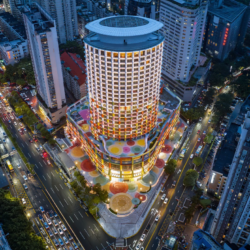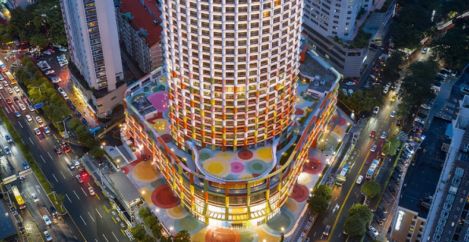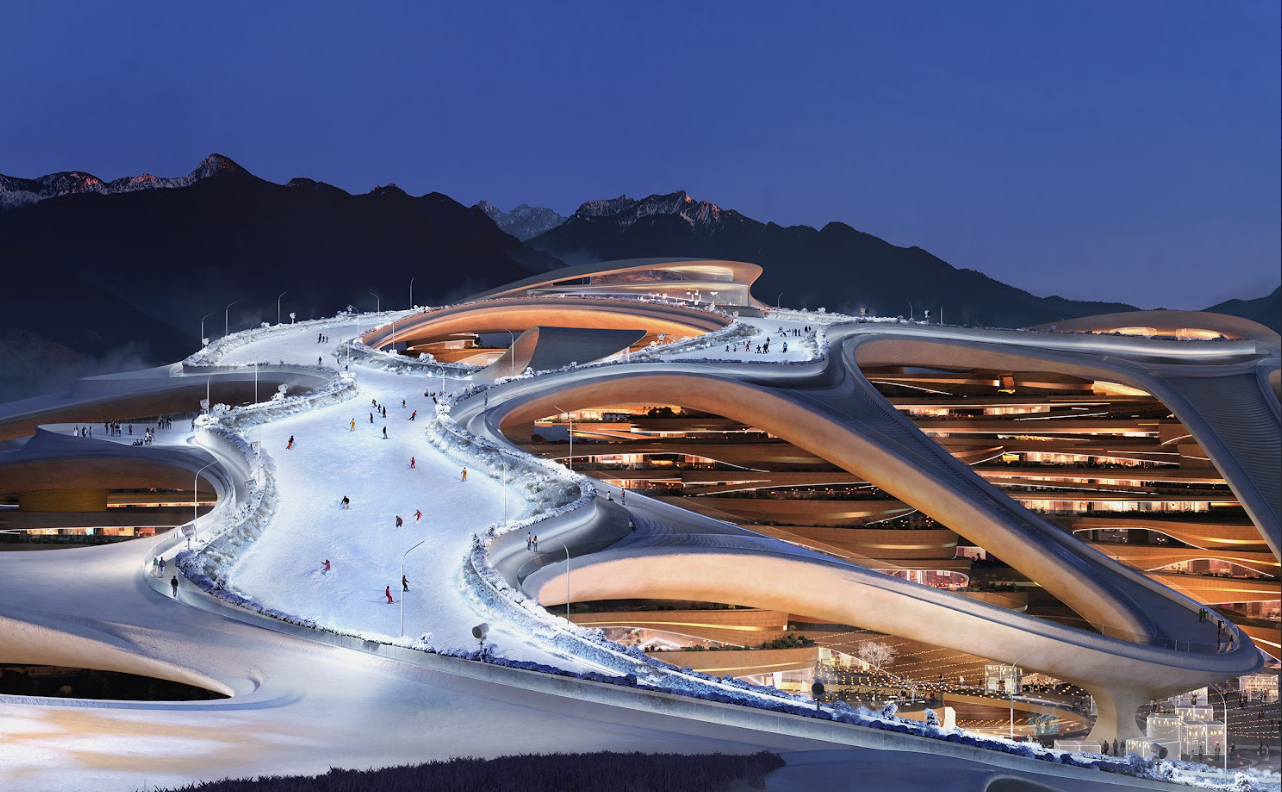April 10, 2024
MIPIM has changed, and mostly for the better
 With an estimated 27,000 delegates from 90 countries, MIPIM is still a force to be reckoned with when it comes to opportunities to network and learn as delegates, with organisations using the week to deliver news, insights and thinking. The theme for MIPIM this year was The Global Urban Community; and it really did feel more international than previous years, the majority of attendees are still from France, Germany and the UK, but there were significant delegations from the United States, Canada, Oman, Egypt and Hong Kong, more from Asia generally and a show stopper from Saudi Arabia, more of which later.
With an estimated 27,000 delegates from 90 countries, MIPIM is still a force to be reckoned with when it comes to opportunities to network and learn as delegates, with organisations using the week to deliver news, insights and thinking. The theme for MIPIM this year was The Global Urban Community; and it really did feel more international than previous years, the majority of attendees are still from France, Germany and the UK, but there were significant delegations from the United States, Canada, Oman, Egypt and Hong Kong, more from Asia generally and a show stopper from Saudi Arabia, more of which later.
Hard to quantify but a quick scroll through LinkedIn, confirms the anecdotal consensus that MIPIM did feel different this year and in a positive way. With Nicolas Kozubek, MIPIM Director setting out that, “Real estate is always the sun of its human parts – from investors to end users – and has a notable social role.”
As Matt Jackson, CEO of leading practice BDG architecture + design observed, “MIPIM 2024 felt really upbeat, there was real optimism in the air about the coming few years. We saw some encouraging and bold next stages for London’s developments, and exciting new steps for key large scale and ambitious initiatives in EMEA.”
Actions speak louder than words
Claiming to be the most sustainable exhibition to date, through focusing on four pillars to create a cleaner, greener, more diverse and equitable event. This included waste minimisation, carbon reduction, social impact and diversity, equity and inclusion.
There is of course the irony of a global property conference discussing net zero whilst jetting in delegates from all corners of globe, but how do you get to inclusivity and diversity without the travel? Efforts were made elsewhere, an express train being laid on by the organisers from Paris, a number of UK visitors travelling on the Eurostar – to paper lanyards (which practically disintegrated by the last day!), all of which is more symbolic than impactful.
The five main stages at MIPIM comprised; Road to Zero to showcase environmental change; Leaders’ Perspective Stage, focus on forecasts; The Asset Class with a view to gaining direction in the market; The Geo-Focus Stage looking at specific local market and the Make It Happen Stage, which featured operational excellence and practical solutions to cope with current market challenges.
Housing Matters! It really does
For anyone who thinks that housing issues are uniquely British think again. MIPIM and Co-Liv collaborated for a pre-opening half-day summit before the show even officially opened.
Investors, developers, local authorities, associations, and urban experts gathered to discuss changing lifestyles, increasing urbanisation of populations and the unacceptable lack of access to homes felt by so many, making it very clear that housing is an issue for both developed and developing countries.
There needs to be more innovation and creative thinking around housing developments to tackle the high cost and lack of development. Joining this discussion were Klara Geywitz, German Minister for Housing, Urban Development and Building, Michal Mlynár, UN Assistant Secretary-General and Deputy Executive Director, UN-Habitat, Sophie Hæstorp Andersen, Lord Mayor of Copenhagen and Belit Nejat Onay, Lord Mayor of Hannover.
And so does the office
Two key themes were highlighted by Robert Thornburgh, CEO of Washington based Society of Industrial and Office Realtors (SIOR) the first the requirement to a new norm in flexible working, the second being the influence of technology driven services. Although uncertain of the significance or long term impact of these changing influences, Thornburgh highlighted “What is clear is that this will continue to push every aspect from building design, valuation, businesses and real estate professionals in ways we have not seen before.”
In the UK specifically, James Carrington, head of city investment at BNP Paribas Real Estate stated that London is now the most attractive market for office investment, “The London market has essentially reached the bottom, which means capital is coming back.”
Lady Lucy French, CEO of the Fleet Street Quarter BID, was present to highlight a major programme to deliver over £5bn of development projects in and around Fleet Street, London. Some 3.25 million sq ft of property is set for transformation, renovation and redevelopment under a masterplan, creating 25,000 additional office jobs through strategic real estate development.
All Eyes on the Middle East
Without a doubt the star of the show was the middle east showcase, from the futuristic models of the mountains of Neom, Trojena (above), which will offer everything from high-end resi, to a stunning golf course and yes, a ski slope! And of course the show-stopping Line, also the now downsized Neom, with a model so complex it was mesmerising. Whilst these projects are the main headline grabbers – many other development were on display throughout Saudi, being built at an unfathomable speed by UK standards.
Lucy Scott, Board Director from chapmanbdsp, building consultants with vast experience in the Middle East region, commented on how great it was to see such an increased presence, “It was great to see the three major Giga projects from Saudi Arabia being showcased, allowing a fantastic insight into the exciting work taking place. We are registered and well established in Saudi, and the diversity of design opportunity makes it an incredibly dynamic place to be.” Scott continued, “Beyond the middle east, MIPIM was notably more positive than recent years, with many conversations around increased investment in the UK too – so good news all round.”
Oman, a MIPIM first timer, also presented two multi-billion dollar projects; Mountain Destination and a Downtown regeneration plan for the capital, Muscat.
Green Futures or No Futures
After a Former Finland Prime Minister, Sanna Marin has a lot to cover in her opening keynote session – the climate crisis, political unrest and populism, gender equality, wellbeing and the unknowns of AI.
It was reported back in 2022 when Sanna Marin was Prime Minister that Finland set out the most ambitious climate target in law to be net zero by 2035, which they are well placed to do given their advanced, clean energy infrastructure. Marin did not miss this opportunity to encourage other countries to do similar, “I believe everyone should meet Finland’s ambition level…because we can’t negotiate on issues like climate and biodiversity. Without a green future there is no future.”
She also urged an increase in pace towards embracing the opportunities of AI, which can be achieved by politicians and businesses talking more. Marin’s very practical answer towards gender equality, “Employ women…Humanity really doesn’t have the luxury of discarding half the global population’s talent and intelligence.” I mean how hard can it be?
Next Gen: the Future is Yours
As simple as Sanna says? Well it is definitely getting easier, it takes generations to make big shifts and the inclusion of Next Gen initiatives and the nurturing of future talent is critical to this and it had a platform at MIPIM.
Muyiwa Oki, the current and youngest ever president of the Royal Institute of British Architects (RIBA), made a call for the young to help shape tomorrow’s world, “I want to say that we need to get young people involved in decision-making because the future that we’re trying to create is going to be created for the next generation.”
Oki was a judge for the MIPIM Challengers Initiative which was a group of sixteen professional under the age of 30 given the opportunity to influence decision makers and industry leaders.
This is so important – attendees at Mipim can observe about the ‘suits’ and lack of diversity and inclusion, or those very same companies (as Informare did this year) can send different people to the event and change it by their very presence – it really is as simple as that.
This feature first appeared in IN Magazine

Anna is the Founder and Director of Informare and a commentator on workplace and design issues
Main image: Shenzhen Women and Children’s Centre















